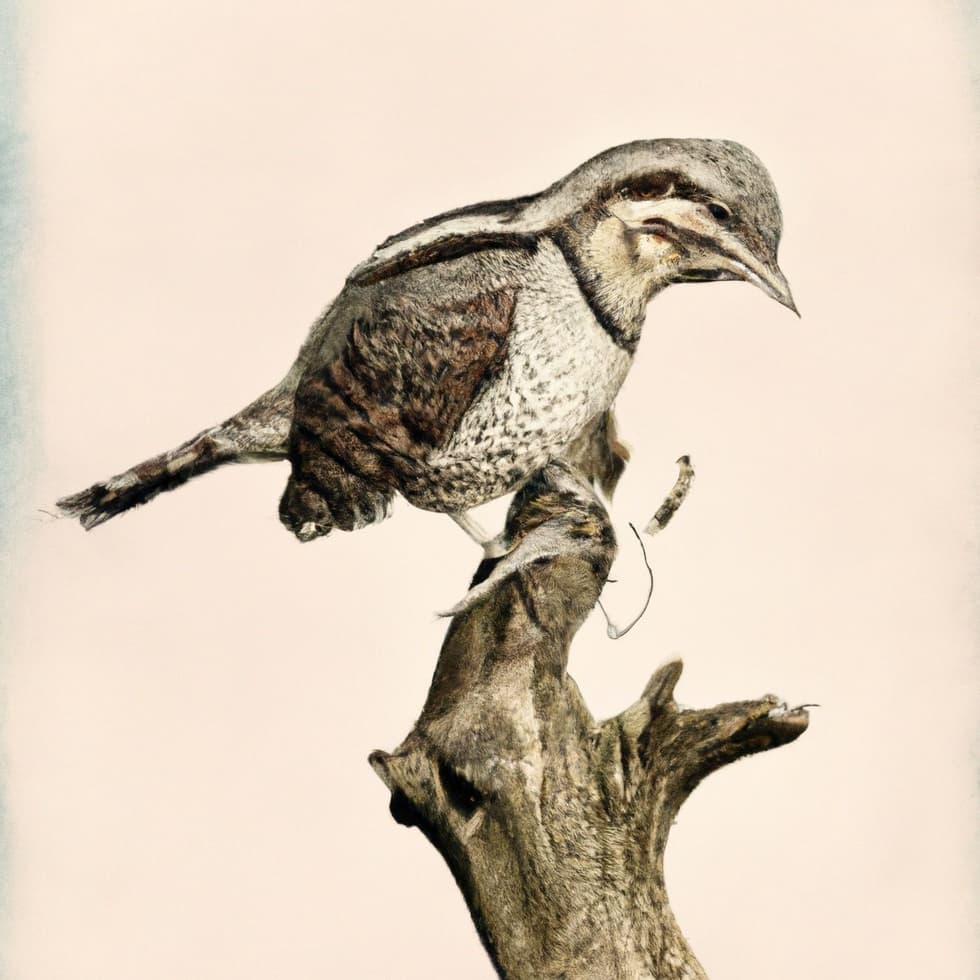
Greetings, fellow bird lovers! Today, we have the pleasure of exploring the fascinating world of the wryneck, a peculiar and intriguing bird that belongs to the woodpecker family. With its distinctive markings, unique feeding habits, and fascinating folklore, the wryneck is a bird that is sure to captivate the imagination. So, let’s delve into 27 curious facts about this amazing bird!
27 Curious Facts about the Wryneck
- The scientific name for the wryneck is Jynx torquilla.
- The wryneck is a small bird, typically measuring between 16-18 cm in length.
- These birds are found in Europe, Asia, and Africa.
- The wryneck’s name comes from its ability to turn its head and neck in a twisting motion, which resembles the action of wringing.
- The wryneck is known for its distinctive markings, which include a mottled brown and beige plumage with a bold black and white striped pattern on its head.
- These birds are primarily active during the day.
- The wryneck is a migratory bird, spending the winter months in sub-Saharan Africa before returning to Europe and Asia to breed.
- Wrynecks are monogamous and form lifelong bonds with their mates.
- These birds are known for their unique feeding habits, which involve flicking their long, sticky tongues in and out of crevices in trees to capture insects and spiders.
- The collective noun for a group of wrynecks is a ‘coil’.
- The wryneck has a loud, piercing call that is often compared to the sound of a sewing machine.
- These birds are able to climb up and down trees with ease, using their strong toes and sharp claws to grip the bark.
- The wryneck is a protected species in many parts of the world.
- Wrynecks have been known to play dead when threatened, remaining motionless and lying on their backs with their wings spread out.
- In Greek mythology, the wryneck was associated with the god of love, Eros, and was said to be able to predict the future.
- The wryneck’s tongue is almost as long as its body and is coated in sticky saliva to help capture insects.
- These birds are often preyed upon by larger birds, such as owls and hawks.
- The wryneck’s breeding season typically occurs between May and June.
- Wrynecks have been known to use old woodpecker holes or natural tree cavities as their nesting sites.
- The wryneck is a solitary bird and does not typically form flocks.
- The wryneck’s average lifespan is between 2-3 years.
- These birds have a unique defence mechanism, which involves feigning injury or illness in order to distract predators away from their nests.
- Wrynecks are able to rotate their heads up to 270 degrees, allowing them to scan their surroundings for potential predators.
- These birds are known for their slow, undulating flight pattern.
- The wryneck is often associated with witchcraft in European folklore, where it was said to have the ability to control storms and the winds.
- Wrynecks are able to hold onto tree branches with just one foot while searching for food with their tongues.
- The wryneck’s scientific name, Jynx torquilla, comes from the Latin word ‘lynx’, which means “a bird used in magic spells.”
Where to Find the Wryneck
The wryneck can be found in various parts of the world, including Europe, Asia, and Africa. During the summer months, they can be found in countries such as the United Kingdom, France, Spain, and Russia. In the winter months, they migrate to sub-Saharan Africa, where they spend their time in woodlands and savannas. Their preferred habitats include deciduous and coniferous forests, as well as scrubland and heathland.
Feeding the Wryneck
Feeding wrynecks in the wild is not recommended, as they have a specific diet of insects and spiders that are found in the crevices of trees. However, if you are interested in attracting wrynecks to your garden, you can provide them with nesting boxes that mimic their natural habitat. These boxes should be placed in a quiet area of your garden, preferably near trees or wooded areas. You can also provide food sources such as mealworms and suet cakes, which can be purchased at most bird feeders.
Final Thoughts
In conclusion, the wryneck is a bird that is full of surprises, from its unique feeding habits to its fascinating folklore. With its mottled plumage and distinctive markings, the wryneck is a bird that is sure to capture the imagination of any bird watcher or nature enthusiast. If you are lucky enough to spot one of these elusive birds during your next woodland walk, take a moment to appreciate its beauty and unique behaviours. With its ability to climb trees, flick its tongue in and out of crevices, and twist its neck in a peculiar motion, the wryneck is truly one of nature’s most fascinating creatures.